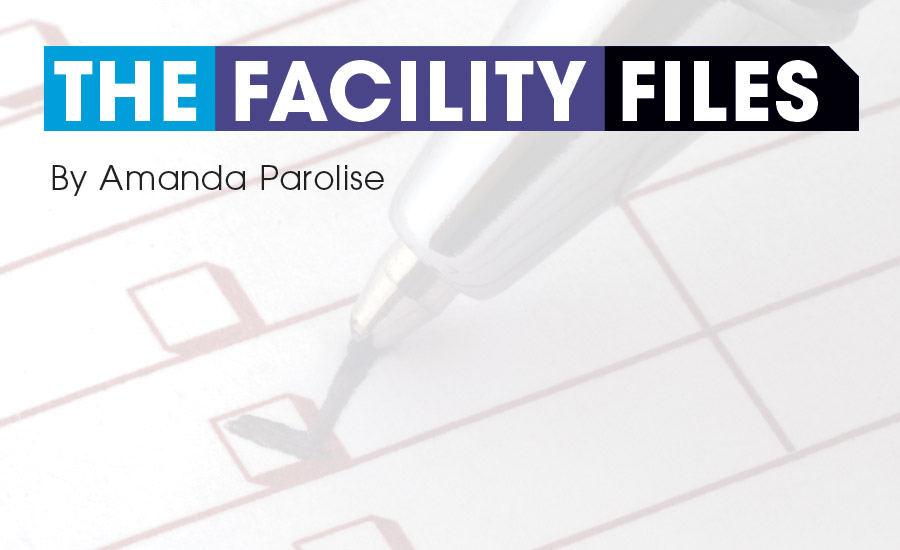This month’s Facility File will focus on the B2B April test for a K-8 school temporary heating project in sync with a utility rebate to furnish and install a new 120 boiler horsepower (BHP) condensing boiler application. It would be very beneficial for the owner’s building facility manager and the city’s outsource/project manager to read chapter 7 (Educational Facilities) in the 2015 ASHRAE Handbook — HVAC Applications. This will offer ASHRAE’s guidelines for preparing a building program that includes emergency facility response to an existing hot water heating system having an internal boiler combustion explosion.
Unexpectedly, the city had to contract for a temporary hot water boiler and associated in-line circulator to be brought in on a flatbed trailer to provide emergency heat for the school. In sync with this emergency funding, the local utility company offered to contribute to a new boiler installation and temporary heating equipment in lieu of simply repairing the 12-year-old boiler. This boiler system rental will be used for two months while the existing boiler is replaced with a highly efficient hot water condensing boiler.
The owner’s facility management group was directed by the design engineer consultant to read chapters 36-43 of the 2015 Handbook for operation and management design guidelines to assist in preparing for this energy-emergency retrofit project. This information, combined with the owner’s own knowledge of operating a K-8 school facility, will assist the design team in understanding intricacies of owning, operating, and managing this new condensing boiler installation. It’s also recommended that the owner-design team read chapter 59 (HVAC Security) of the same ASHRAE handbook as well as include a security consultant onboard to contribute to processing design.
With all these design guidelines from ASHRAE, the design engineer should meet with the owner’s O&M staff to discuss specific building standards that need to be applied to this project. For this application, the city’s school system already has an outsourced O&M group to maintain all the school’s buildings. The design team will be required to know this in advance to adjust its contract specifications pertaining to O&M, training, the work order system, and the energy operating budget.
In the design phase of the project, the school facility manager’s O&M staff will want to contribute information to the design team’s writing of the contract specification and the following activities: service contracts, parts inventory, and as-built drawings requirements. Reviewing the design documents, this O&M staff will want to be assured that equipment serviceability is adequate and safe e.g., how does a temporary boiler work in sync with an existing 2-pipe heating and air conditioning system.
The project delivery will be design-bid-build (DBB) with the temporary boiler project delivery being an integral part of the general contractor’s DBB contract. This BOD is to incorporate valve and capped connections at the new school building’s exterior equipment room wall extended from the boiler-mounted flatbed truck along with an electric generator to provide hot water to the existing HVAC system. The general contractor’s heating subcontractor along with the school’s O&M staff will need specialized training to assist in the operation of the temporary boiler to provide immediate building heat while the new condensing boiler is being installed.
In the construction phase, the O&M staff will want to revisit the issues noted earlier during the design phase. Next comes the startup and commissioning phases. The O&M staff will want to be proactive in following along with the DBB’s mechanical-electrical in-house coordinator and the subcontractor’s startup personnel. They’ll want to receive equipment training from the boiler manufacturer’s startup technician and system training using the O&M manuals and contract drawings (that will eventually become the as-built drawings).
Once the startup has been completed and the ATC subcontractor and third-party commissioning (Cx) consultant and third-party TAB consultants have completed the water balancing work, the heating subcontractor shall go through an automatic control system initial dry-run demonstration prior to the DBB contractor and his subcontractors demonstrating the system to the design engineer and the Cx consultant. The ATC subcontractor should also begin collecting system performance by trending pertinent HVAC system and equipment data by trending the following:
[X] Outdoor air dry bulb and wet bulb temperature [X] Hot water supply and return temperature [X] Space temperatures [X] Alarms [X] Boiler control points
Taking the same approach as the design engineering, the school’s O&M personnel should use a series of computer-generated touchscreen project checklists that allows his staff to confirm that the following facility files have been collected. This process should start at the beginning of construction and not at project closeout so that the facility files can be inputted into a CMMS system. Touchscreen O&M checklists should include:
[X] Equipment shop drawings [X] O&M manuals, parts list, and lubricants [X] Troubleshooting tips [X] Seasonal startup and shutdown instructions.
The O&M staff should review the contractor-produced piping and flue exhaust piping field fabrication/field coordination drawings prior to fabrication. Touchscreen service checklists should include:
[X] Location of shutoff valves, ATC valves, and balancing valves [X] Strainers [X] Equipment and control devices [X] Access for servicing equipment
The equipment preventive maintenance work order system shall be performed as scheduled to assure continuous space comfort. In addition, the design engineer’s hydraulic modeling of the entire system should be updated after the final TAB report. This will require the TAB subcontractor to provide the water balancing reports along with the associated system flow diagrams noting quantities and pressures for rebalancing, if necessary, as part of the project closeout documents. Touchscreen training checklists should include:
[X] Equipment [X] System [X] Emergency plan [X] Automatic controls [X] Energy management


